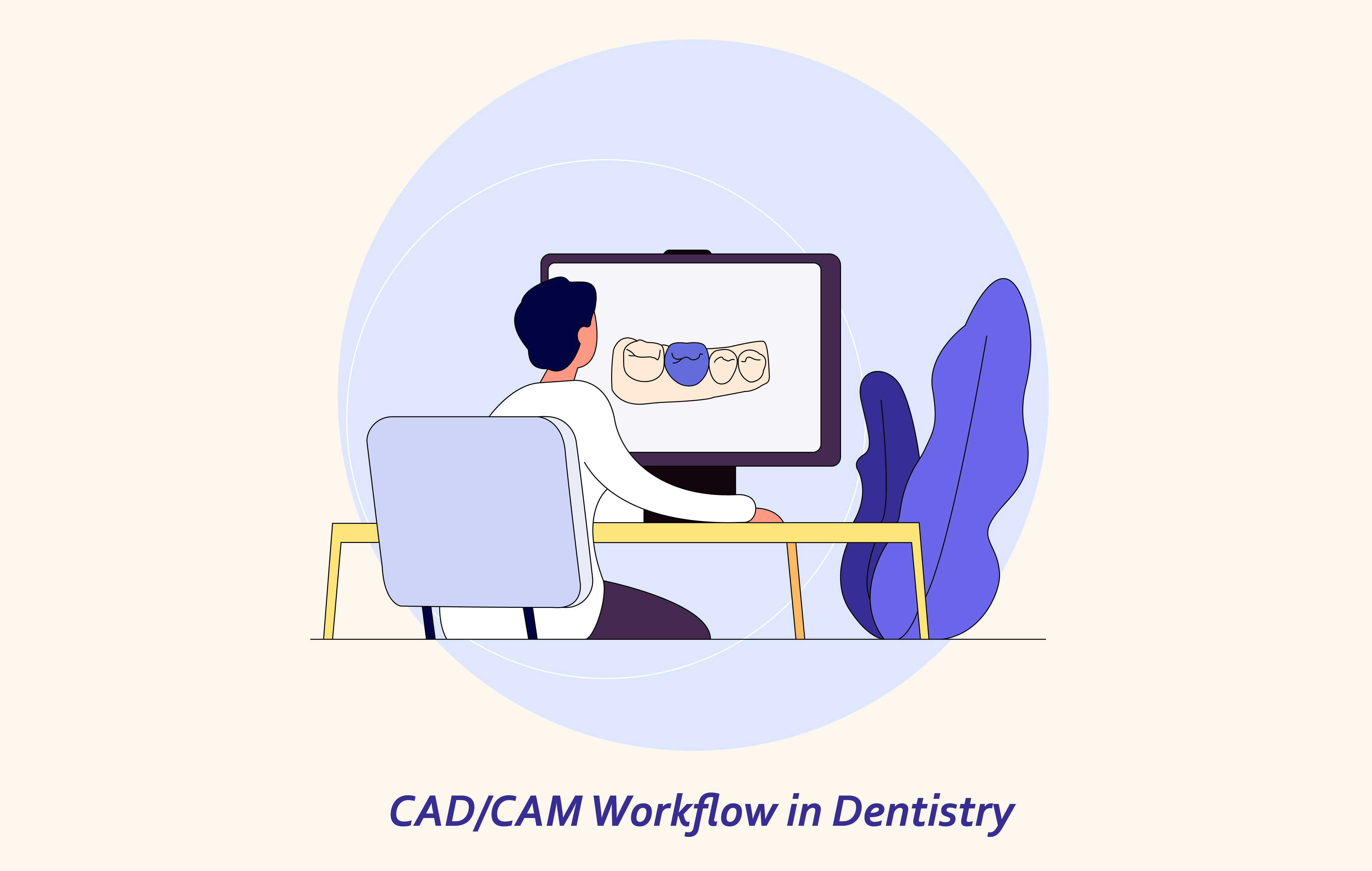Computer-Aided Design and Computer-Aided Manufacturing (CAD/CAM) is a technology-driven workflow used in various industries, including dentistry. It involves the use of specialized software and hardware to design and produce custom-made dental restorations, such as crowns, bridges, inlays, onlays, and dental implants. Here's a more detailed look at CAD/CAM workflow in dentistry:
1. Digital Impressions
CAD/CAM in dentistry often starts with an intraoral scan of the prepared tooth/teeth. Instead of using traditional dental putty to make impressions of a patient's teeth, dentists will use an intraoral scanner to capture a detailed and accurate 3D digital model of the patient's oral cavity.
2. CAD Design
The digital impression data is then imported into CAD software. In CAD software, dental technicians can design custom dental restorations. They can precisely shape and size the restoration to fit the patient's oral anatomy.
3. Restoration Design & Customization
CAD software allows for detailed customization of the restoration's shape, size, and color. Dentists can simulate how the restoration will function within the patient's mouth, making adjustments to ensure proper occlusion (bite) and alignment.
4. CAM Production
Once the design is finalized and approved, the CAD data is sent to a CAM system for production. CAM systems can include milling machines, 3D printers, or in-house milling units. These machines use the CAD data to fabricate the dental restoration from suitable materials, common options include ceramic, zirconia, titanium, gold, composite resin, and more.
5. Quality Control
The fabricated dental restoration undergoes careful inspection to ensure it meets the specified design criteria, accuracy, and quality standards. Any necessary adjustments can be made before the final placement.
6. Delivery and Placement
The custom dental restoration is delivered to the dental office. The dentist places the restoration in the patient's mouth, ensuring it fits comfortably and functions correctly.
7. Final Adjustments
The dentist may make minor adjustments to the restoration's fit and bite if necessary.
8. Patient Follow-up
The patient is typically scheduled for a follow-up appointment to ensure the restoration is fitting as expected and to address any issues.
The application of CAD/CAM technology in dentistry has ushered in a new era of precision, efficiency, and patient-centered care. From digital impressions and restoration design to implant planning and orthodontics, this innovative technology has transformed the way dental procedures are performed. With its ability to enhance accuracy, reduce treatment time, and improve patient satisfaction, CAD/CAM has become an indispensable tool for modern dental professionals. As technology continues to evolve, we can expect further advancements in CAD/CAM, pushing the boundaries of what is possible in the field of dentistry.
Post time: Aug-24-2023






